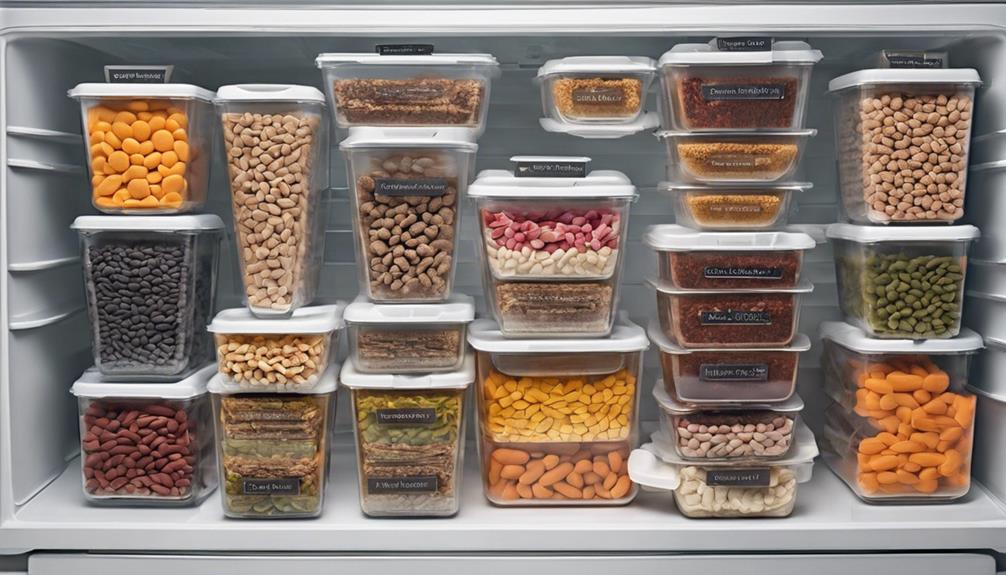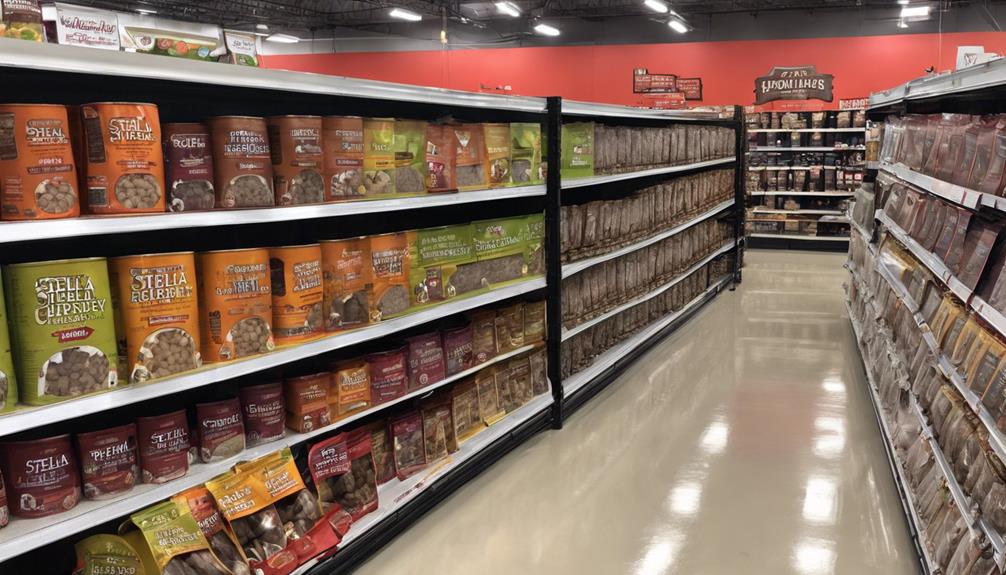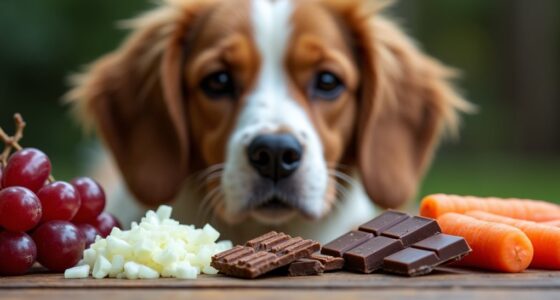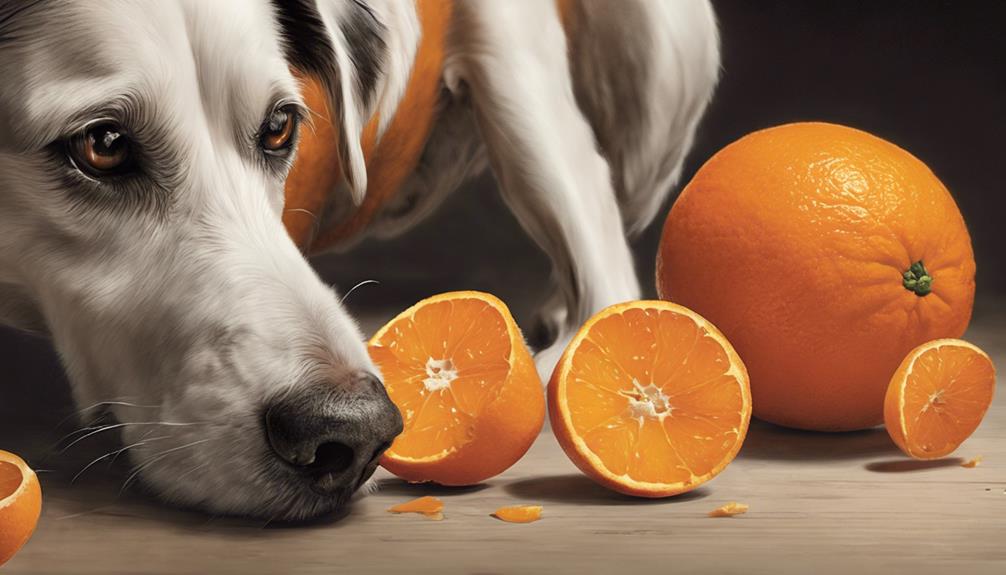Embarking on the journey of making raw dog food recipes can significantly improve your furry companion’s health and well-being. When starting out, it is important to select high-quality protein sources, fresh meats, and nutrient-rich organ meats. Safety is paramount, so it is crucial to adhere to strict hygiene practices, ensure a balanced diet with essential nutrients, and introduce new ingredients slowly to observe any negative reactions. Proper storage, handling, and portioning are essential for maintaining freshness and nutritional value.
Moving to raw food should be done gradually, monitoring your dog's health along the way and consulting with a veterinarian for personalized guidance. Ultimately, a balanced and nutritionally complete raw diet can transform your dog's well-being.
Key Takeaways
- Choose high-quality protein sources for nutrient-rich meals.
- Include fresh meat and organs for essential vitamins and minerals.
- Maintain strict hygiene during preparation to ensure safety.
- Store in airtight containers and label for easy portioning.
- Consult with a vet for personalized guidance on transitioning.
Benefits of Raw Dog Food
Raw dog food offers numerous benefits to dogs, enhancing their overall health and well-being. A balanced raw diet can greatly improve a dog's digestion and nutrient absorption, leading to better overall health.
Homemade raw dog food diets, often incorporating ingredients like chicken and beef, can contribute to healthier skin, a shinier coat, and increased energy levels for our beloved pets. Additionally, such diets may aid in weight management and help strengthen the immune system, providing a holistic approach to canine health.
Dogs on raw food diets tend to have firmer stools and reduced allergy symptoms, showcasing the positive impact of this type of nutrition. Moreover, raw diets offer quick adjustments for dogs at different life stages and can be tailored to address special dietary needs effectively.
Embracing a homemade raw dog food diet can be a proactive step towards ensuring the best health and well-being of our canine companions.
Selecting Quality Ingredients

After acknowledging the advantages of raw dog food, it becomes important to meticulously choose quality ingredients to guarantee peak nutrition for our canine companions.
When planning a raw dog food diet, opt for high-quality protein sources like lean ground beef, chicken, turkey, or lamb to provide essential amino acids necessary for your dog's health. Make sure the meat you select is fresh and of good quality to deliver adequate nutrients. Incorporating organ meats such as liver or kidney is also crucial as they're rich in vitamins and minerals essential for a balanced diet.
Don't forget to include raw eggs in your dog's meals; they're a nutrient-rich protein source that offers numerous benefits. For variety and additional nutrients, consider adding rabbit or fish occasionally to the menu.
Preparing Raw Dog Food Safely
To guarantee the safe preparation of raw dog food, it's essential to adhere to strict hygiene practices and proper handling techniques. When you make raw dog food at home, using separate cutting boards for meat and vegetables helps prevent cross-contamination and ensures your dog's nutritional needs are met without risking their health. Thoroughly cleaning utensils and surfaces before and after preparing homemade raw food is important to avoid bacterial contamination.
It's critical to balance your dog's diet with muscle meat for protein, essential fatty acids for coat health, and adjust portions based on your dog's activity level. When exploring homemade recipes for raw feeding, gradually introduce new ingredients to monitor any potential allergic reactions. Consult with your veterinarian for guidance on safely handling and preparing raw dog food to guarantee your furry friend gets the best nutrition possible.
Storage and Serving Tips

To guarantee the best storage and serving practices for raw dog food, prioritizing proper handling techniques and maintaining freshness is crucial. Store raw dog food in airtight containers to keep it fresh and to prevent bacterial contamination. Label and freeze organs separately to make portioning during meal preparation easier.
Following recommended storage guidelines is essential to guarantee peak nutrient retention in the raw dog food. When serving, make sure to provide appropriate portion sizes based on your dog's weight and activity level for a well-balanced diet. It's also beneficial to rotate between different raw food recipes to offer your canine companion a variety of nutrients and flavors.
Transitioning to Raw Dog Food
When changing your dog to a raw food diet, gradual introduction is vital to avoid digestive issues and guarantee a smooth adjustment period. Start by substituting a small portion of your dog's current food with prepared raw dog food and then gradually increase the ratio over 7-10 days.
Monitoring your dog's stool consistency, energy levels, and overall health during this shift phase is essential. It's best to consult with a veterinarian for personalized guidance on moving to a raw diet that meets your dog's specific needs.
Slowly introduce different protein sources like meat and observe for any allergic reactions or sensitivities. This step-by-step approach ensures that you're making the best feeding choices for your furry friend's overall health.
Frequently Asked Questions
How Do I Make Raw Food for My Dog?
I prepare raw food for my dog by combining fresh meat, vegetables, bones, and organs in balanced proportions. After mixing, I portion the meals into servings and freeze them for convenience. Thawing in the fridge before serving guarantees nutrient retention.
What Is the Formula for Raw Food for Dogs?
The formula for raw food for dogs usually consists of 60-80% meat and offal, 10-30% vegetables, and 10% bones. Percentages may vary depending on the dog's age, size, activity level, and health condition. It's essential for their well-being.
How Do You Raw Feed a Dog for Beginners?
When raw feeding a dog as a beginner, begin with balanced recipes containing meat, bones, organs, and veggies. Shift gradually, monitor health closely, and consult a vet for guidance. Enjoy benefits like improved digestion and a healthier coat.
What Is the Best Mix for Raw Dog Food?
The best mix for raw dog food typically includes a balance of 60-80% meat and offal, 10-30% vegetables, and 10% bones for essential nutrients. Adjustments based on factors like age and health requirements may be necessary.
Can I Use Your Ultimate Raw Dog Food Recipes as a Base for My Own Recipes?
Yes, you can definitely use our ultimate raw dog food recipes as a base for your own custom recipes for your pup. Our raw dog food recipes are designed to be easily adaptable, so feel free to get creative and tailor them to your pup’s preferences and dietary needs.
Conclusion
Just like a well-crafted recipe, feeding your dog raw food is a balance of quality ingredients and safe preparation.
By following these steps, you can provide your furry friend with the ultimate nutrition they deserve.
Remember, moving to raw dog food may take time, but the benefits for your dog's health and well-being are worth the effort.
Trust the process, and watch your dog thrive on this wholesome diet.










